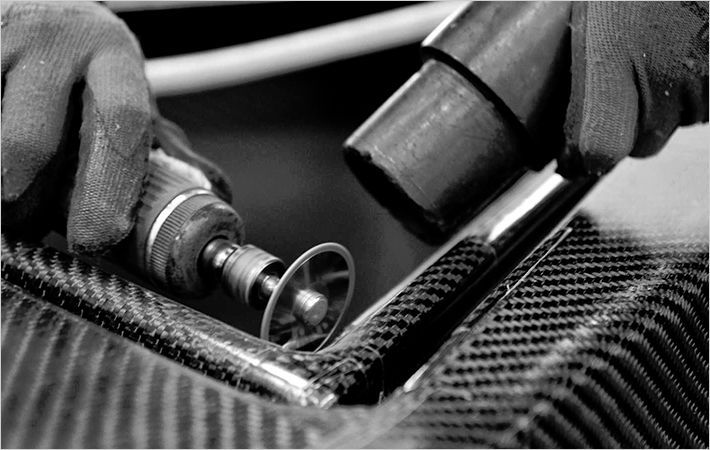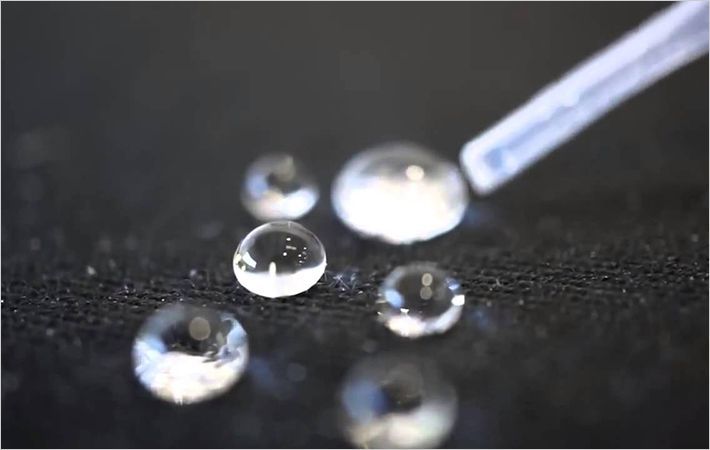“High-pressure RTM presses not only enable shorter cycle times for complex parts with high requirements regarding geometry and rigidity, but also deliver consistently high part and surface quality,” says Product Manager Raimund Zirn. This virtually eliminates so-called voids, i.e. resin-free vacuum pores or gaps within the part or along its edges.
In the high-pressure RTM process, resin is injected as quickly and smoothly as possible into the vacuum mold which is opened by just a few tenths of a millimeter. This gap injection process enables the resin to spread over the mat with far less flow resistance and thus with low injection pressure. It then quickly infiltrates the mat before polymerization is started by heat induction.
The curing process begins with the wetting of the last fibers:
“The vacuumizing, fast resin injection, high resin pressures and tempered dies mean that the gelling process virtually begins with the wetting of the last fiber,” explains Raimund Zirn.
Curing takes four to eight minutes – the thicker the part, the longer, as the reaction heat cannot be led as easily into the die. Depending on the part, the necessary resin pressures also vary between 30 and 150 bar. Large-surface exterior panels with clamping areas of 3,600 x 2,400 mm require total press forces of 36,000 kN or more.
Due to the geometry of the part or cavity surface, the die’s center of loading is not necessarily in the middle of the press. There are also off-center forces from the injection positions.
“The parallelism control prevents the slide or upper die from tilting during gap injection and thus ensures smooth and even injection over the entire surface,” explains the Product Manager. With a positioning speed of 1 mm/s, the Schuler presses achieve parallelism values of 0.05 mm in absolute terms with diagonal clamping surfaces of 4 m.
The preform and part handling processes, as well as the necessary die cleaning, account for a considerable part of the RTM cycle lasting two to three minutes. “This largely involves the removal of plastic residues, which mainly stick to the polymer seal located in the lower die,” adds Raimund Zirn.
On request, however, Schuler can fit the RTM presses with two shuttle moving bolsters so that a common upper die can be operated with two alternating and movable lower dies. This reduces downtime to the period it takes to replace the lower dies, e.g. with a distance of 4.5 m per moving bolster approximately 20 s.
Upstroke short-stroke presses offer more benefits:
RTM presses are available in two designs: conventional downstroke machines work with a fixed bed and moving bolster, and a slide whose press force is transmitted via cylinders in the press crown. Parallelism is ensured by four servo-controlled counterpressure cylinders located at the bed corners. These are also responsible for the breakout force needed to counter the adhesive forces and open the die.

